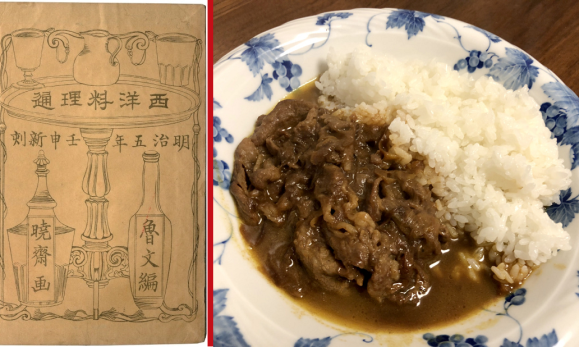
SoraNews24 goes back to the kitchen to go back in time as we taste-test the first written record of how to make curry in Japan.
Curry has become such a ubiquitous part of the Japanese diet that should you walk down a random street in Tokyo, you’re as likely to find a curry joint as you are a sushi or soba restaurant. That popularity has led to modern innovations such as matcha green tea and Attack on Titan curries, both of which we’ve happily eaten.
But today, instead of looking towards the future of Japanese curry, we’re turning our eyes to the past by making Japan’s oldest curry.
As popular as curry is in Japan now, it was entirely unknown until about 150 years ago. When Japan’s years of feudal-government isolationism ended in the late 19th century, it opened up the country not only to foreign science and technology, but foreign food as well.
Curry came to Japan through British sailors, who’d already made the originally Indian dish a staple of their at-sea cuisine. In 1872, the Japanese-language cookbook Western Cooking Michimasa-Second Volume was published, containing 110 recipes for the exotic meals and desserts eaten by foreigners who came to Japan.
Back here in 2018, we recently attended the Tokyo International Antiquarian Book Fair, where we got to look through a copy of the Meiji-period cookbook, which contained entries for:
● Curried Beef or Muten – Powder Sprinkled on Beer Technique
● Explanation of Curried Weel or Fowl Curry Bird Meat Cooked with Curry Powder
After a few moments deciphering the pre-standardized renderings of English loanwords (in modern Japanese, “curry” is written/pronounced カレー/karee, but the cookbook’s text has “curried” as コリード/koriido, for example), we realized we were looking at the two oldest recorded curry recipes in Japanese history, one for beef or mutton and the other for chicken. So we jotted down some notes and headed to the SoraKitchen to cook, and eat, a bit of history.
Since the curry beef/mutton recipe was listed first in the book, we figured it has seniority on the chicken version, so that’s what we decided to make.
Ingredients (as listed in cookbook):
● Meat trimmings
● Spring onions (2)
● Bottor (4.5 loaves)
● Curry powder (1 shitoruto spoon)
● Flower (1 shitoruto spoon)
● Salt (a measure)
● Water or meat drippings
Ingredients we used:
● Beef (200 grams [7.1 ounces])
● Spring onions (2)
● Butter (150 grams [5.3 ounces])
● Curry powder (1 tablespoon)
● Flour (1 tablespoon)
● Salt (1 pinch)
● Water (150 milliliters [5.1 ounces])
Our entire staff was unable to figure out what a “shitoruto spoon” is or was, so we decided to use a tablespoon, under the logic that a teaspoon wouldn’t be enough curry powder to impart enough flavor. Should we ever build a time machine at some point in the future, we’ll be sure to go back and ask the book’s authors what they meant, then come back to the present and update the recipe seen in this article (but since that hasn’t happened yet, you can either assume time travel remains impossible or that we got distracted by something in the past, probably being able to meet real-life ninja).
With our ingredients assembled, it was time to look over the cookbook’s directions.
Directions (as listed in cookbook):
1. Thinly slice the spring onions. Place them in a pot along with the bottor, and sauté until gray in color.
2. Mix the shitoruto spoon of curry with the shitoruto of flour and salt, then add the mixture to the gray spring onions.
3. Thinly slice the meat and place it in the pot. Mix it with the ingredients already there while cooking over a weak flame for 10 minyutes. Add the water or drippings, let simmer on a weak flame for half an hour.
At the risk of sounding arrogant, we’re going to assume that “cook the onions and butter until they’re gray” was either something that got lost in translation from the original British chef’s explanation, or maybe just an odd quirk of historical descriptions of color (maybe “gray-colored onions and butter” is just the cookbook author’s version of Greek poet Homer’s “wine-dark sea”). In any case, we’re not sure we’re talented/terrible enough cooks to get butter to turn gray anyway, so we made a slight change to that part of the recipe, but otherwise stuck to the cookbook’s plan, using a deep frying pan since it was large enough to hold our modestly-sized edible endeavor.
Directions we used:
1. Slice onions, sauté with butter until golden
2. Mix curry powder, flour, and salt. Add mixture to onions and butter.
3. Thinly slice beef and add to mixture. Sauté on low heat for 10 minutes.
4. Add water, let simmer for 30 minutes.
When our curry was done, we poured it onto a plate with white rice occupying the other half, as is the Japanese serving style, and it actually looked pretty tasty, if you’ll forgive us for tooting our own horn.
▼ Begging for forgiveness is a surprisingly common occurrence for us.
Honestly, it didn’t look significantly different from modern curry. As for the taste…
…that’s a different story. For starters, this old-school curry is much saltier than what you’ll find in contemporary Japan. There’s also a bit of bitterness, which we attribute to the onions getting slightly scorched when we tossed the curry powder and flour into the pan. Finally, there wasn’t a trace of the kid-pleasing sweetness found in modern Japanese curries.
Both of those might be problems that you could probably overcome, though. Being extra-slow and cautious when adding in the curry and flour should help prevent singeing, and as for the saltiness, we’re guessing that perhaps the 19th-century British navy didn’t use salted butter like the kind we had in our 21st-century fridge, and an unsalted variety should improve the flavor balance quite a bit.
Still, Japan’s oldest curry has a unique charm all its own, and with the adjustments we mentioned, could be even better. As for the fact that we didn’t think to do those in the first place, we guess that’s just one more piece of evidence that the SoraNews24 of the future still hasn’t sorted out time travel.
Related: Tokyo International Antiquarian Book Fair
Photos ©SoraNews24
[ Read in Japanese ]
Follow Casey on Twitter, where curry for lunch is sounding like an excellent idea.

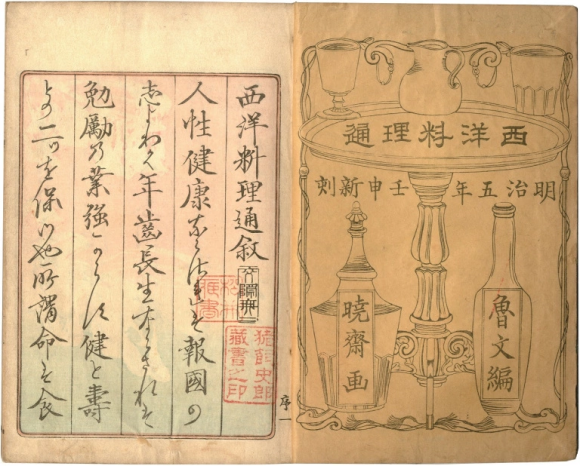
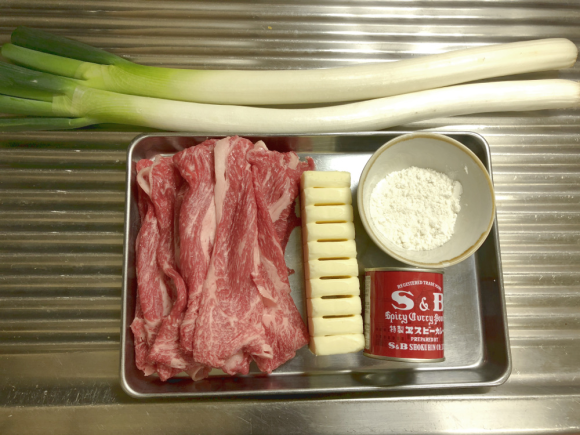

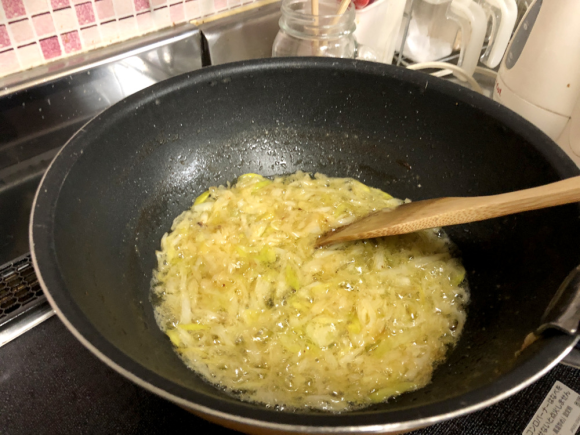
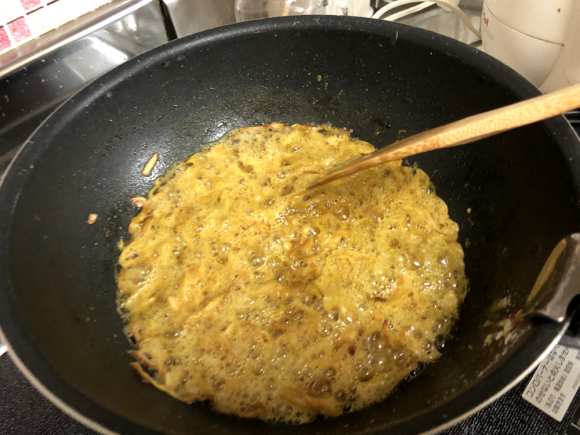
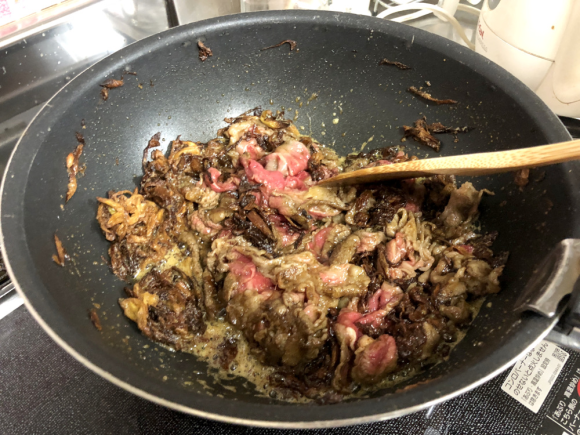
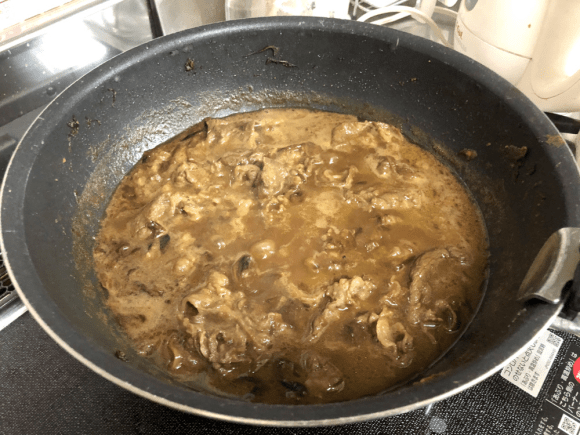
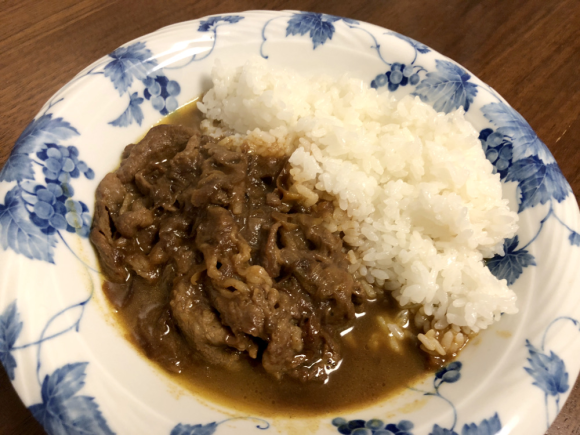
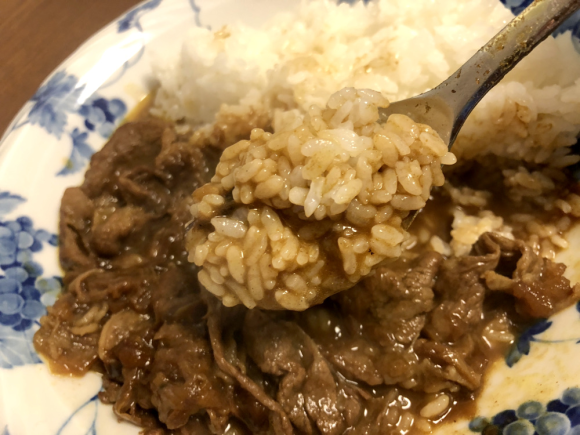
 Anime cooking in real life – How to make Food Wars’ unagi matelote【SoraKitchen】
Anime cooking in real life – How to make Food Wars’ unagi matelote【SoraKitchen】 How to make a “curry rice bowl” using instant oatmeal instead of rice 【SoraKitchen】
How to make a “curry rice bowl” using instant oatmeal instead of rice 【SoraKitchen】 Here’s what happens when you mix 75 types of Japanese instant curry together【SoraKitchen】
Here’s what happens when you mix 75 types of Japanese instant curry together【SoraKitchen】 How to use leftover Japanese curry: We test out a recipe for curry bread quiche【SoraKitchen】
How to use leftover Japanese curry: We test out a recipe for curry bread quiche【SoraKitchen】 Can we successfully recreate Snoop Dogg’s cookbook recipes in Japan?【SoraKitchen】
Can we successfully recreate Snoop Dogg’s cookbook recipes in Japan?【SoraKitchen】 Japan may add Japanese language proficiency, lifestyle classes to permanent foreign resident requirements
Japan may add Japanese language proficiency, lifestyle classes to permanent foreign resident requirements Disillusionment at Tsukiji’s tourist-target prices led us to a great ramen restaurant in Tokyo
Disillusionment at Tsukiji’s tourist-target prices led us to a great ramen restaurant in Tokyo Lacquerware supplier to emperor of Japan and Pokémon team up for new tableware
Lacquerware supplier to emperor of Japan and Pokémon team up for new tableware More Than a Capsule Stay: Why Solo Travelers Choose “global cabin Yokohama Chinatown”
More Than a Capsule Stay: Why Solo Travelers Choose “global cabin Yokohama Chinatown” 7-Eleven Japan starts new temporary luggage storage service in over 300 branches
7-Eleven Japan starts new temporary luggage storage service in over 300 branches Japan’s human washing machines will go on sale to general public, demos to be held in Tokyo
Japan’s human washing machines will go on sale to general public, demos to be held in Tokyo “Good on the floor?” Five funny times Google Translate drops the ball with Japanese idioms
“Good on the floor?” Five funny times Google Translate drops the ball with Japanese idioms Three kotatsu-boosting items to turn your home into a toasty fort against winter’s cold
Three kotatsu-boosting items to turn your home into a toasty fort against winter’s cold How to speak Japanese like a gyaru【2024 edition】
How to speak Japanese like a gyaru【2024 edition】 Fighting mild hunger with a Japanese soda that turns into jelly in the stomach【Taste test】
Fighting mild hunger with a Japanese soda that turns into jelly in the stomach【Taste test】 Starbucks teams up with 166-year-old Kyoto doll maker for Year of the Horse decorations【Photos】
Starbucks teams up with 166-year-old Kyoto doll maker for Year of the Horse decorations【Photos】 Tokyo’s Tsukiji sushi neighborhood asks tour groups to stay away for the rest of the month
Tokyo’s Tsukiji sushi neighborhood asks tour groups to stay away for the rest of the month Street Fighter Hadouken Churros to be launched and eaten in Tokyo, Okami pudding on offer too
Street Fighter Hadouken Churros to be launched and eaten in Tokyo, Okami pudding on offer too Japanese woman mistaken for bear
Japanese woman mistaken for bear Return of Totoro sequel short anime announced for Ghibli Park
Return of Totoro sequel short anime announced for Ghibli Park Starbucks Japan releases new zodiac chilled cup drink for 2026
Starbucks Japan releases new zodiac chilled cup drink for 2026 Is this the most relaxing Starbucks in Japan?
Is this the most relaxing Starbucks in Japan? Starbucks on a Shinkansen bullet train platform: 6 tips for using the automated store in Japan
Starbucks on a Shinkansen bullet train platform: 6 tips for using the automated store in Japan Japanese train company is letting fans buy its actual ticket gates for their homes
Japanese train company is letting fans buy its actual ticket gates for their homes Is China’s don’t-go-to-Japan warning affecting tourist crowds in Tokyo’s Asakusa neighborhood?
Is China’s don’t-go-to-Japan warning affecting tourist crowds in Tokyo’s Asakusa neighborhood? Starbucks Japan unveils new Christmas goods and a rhinestone tumbler that costs 19,500 yen
Starbucks Japan unveils new Christmas goods and a rhinestone tumbler that costs 19,500 yen Tokyo considering law requiring more trash cans following litter increase in heavily touristed area
Tokyo considering law requiring more trash cans following litter increase in heavily touristed area Nintendo’s Kirby now delivering orders at Kura Sushi restaurants, but not in Japan
Nintendo’s Kirby now delivering orders at Kura Sushi restaurants, but not in Japan Tokyo event lets you travel back in time, for free, to celebrate 100 years since Showa era start
Tokyo event lets you travel back in time, for free, to celebrate 100 years since Showa era start Survey asks foreign tourists what bothered them in Japan, more than half gave same answer
Survey asks foreign tourists what bothered them in Japan, more than half gave same answer Japan’s deadliest food claims more victims, but why do people keep eating it for New Year’s?
Japan’s deadliest food claims more victims, but why do people keep eating it for New Year’s? We deeply regret going into this tunnel on our walk in the mountains of Japan
We deeply regret going into this tunnel on our walk in the mountains of Japan Studio Ghibli releases Kodama forest spirits from Princess Mononoke to light up your home
Studio Ghibli releases Kodama forest spirits from Princess Mononoke to light up your home Major Japanese hotel chain says reservations via overseas booking sites may not be valid
Major Japanese hotel chain says reservations via overseas booking sites may not be valid Put sesame oil in your coffee? Japanese maker says it’s the best way to start your day【Taste test】
Put sesame oil in your coffee? Japanese maker says it’s the best way to start your day【Taste test】 The top 10 annoying foreign tourist behaviors on trains, as chosen by Japanese people【Survey】
The top 10 annoying foreign tourist behaviors on trains, as chosen by Japanese people【Survey】 No more using real katana for tourism activities, Japan’s National Police Agency says
No more using real katana for tourism activities, Japan’s National Police Agency says Starbucks Japan reveals new sakura drinkware collection, inspired by evening cherry blossoms
Starbucks Japan reveals new sakura drinkware collection, inspired by evening cherry blossoms Can you use McDonald’s French fries to make Japanese-style croquettes?【SoraKitchen】
Can you use McDonald’s French fries to make Japanese-style croquettes?【SoraKitchen】 How to make so, Japan’s 1,000-year-old dessert recipe that’s back in fashion【SoraKitchen】
How to make so, Japan’s 1,000-year-old dessert recipe that’s back in fashion【SoraKitchen】 Japan goes crazy for “gaming eggs,” and here’s the super-easy recipe【SoraKitchen】
Japan goes crazy for “gaming eggs,” and here’s the super-easy recipe【SoraKitchen】 Tired of your usual camping fare? Try this easy Japanese festival favorite【SoraKitchen】
Tired of your usual camping fare? Try this easy Japanese festival favorite【SoraKitchen】 How to make Tokyo Disneyland’s awesome Mickey Mouse eggs at home!【SoraKitchen】
How to make Tokyo Disneyland’s awesome Mickey Mouse eggs at home!【SoraKitchen】 Here’s what happens when you mix all 53 kinds of Muji curry into one crazy super curry【Taste test】
Here’s what happens when you mix all 53 kinds of Muji curry into one crazy super curry【Taste test】 How to make Disney’s Chocolate Peanut Butter Banana French toast at home【SoraKitchen】
How to make Disney’s Chocolate Peanut Butter Banana French toast at home【SoraKitchen】 We try making Nisshin’s Jijimi Korean Pancakes in a cup kit【SoraKitchen】
We try making Nisshin’s Jijimi Korean Pancakes in a cup kit【SoraKitchen】 How to make okonomiyaki at home【SoraKitchen】
How to make okonomiyaki at home【SoraKitchen】 We try making a low-calorie katsu with tofu instead of pork【SoraKitchen】
We try making a low-calorie katsu with tofu instead of pork【SoraKitchen】 Rice cooker kuri gohan and two more super-easy chestnut recipes to make this fall【SoraKitchen】
Rice cooker kuri gohan and two more super-easy chestnut recipes to make this fall【SoraKitchen】 Is a curry donut rice bowl greater than the sum of its parts?【SoraKitchen】
Is a curry donut rice bowl greater than the sum of its parts?【SoraKitchen】 A whole new way to eat somen noodles: Homemade somen canapés!【SoraKitchen】
A whole new way to eat somen noodles: Homemade somen canapés!【SoraKitchen】 Ultimate bachelor chow recipe: Cheeseburger-style furikake toast【SoraKitchen】
Ultimate bachelor chow recipe: Cheeseburger-style furikake toast【SoraKitchen】 How to make your own Pringles-flavor instant noodles【SoraKitchen】
How to make your own Pringles-flavor instant noodles【SoraKitchen】 Celebrate Halloween with our recipe for jack-o’-lantern nikuman steamed buns【RocketKitchen】
Celebrate Halloween with our recipe for jack-o’-lantern nikuman steamed buns【RocketKitchen】 We test out the recipe for “botayama curry” featuring black sauce and black rice
We test out the recipe for “botayama curry” featuring black sauce and black rice
Leave a Reply